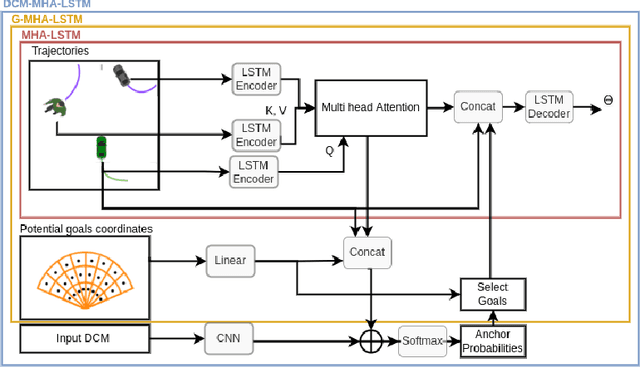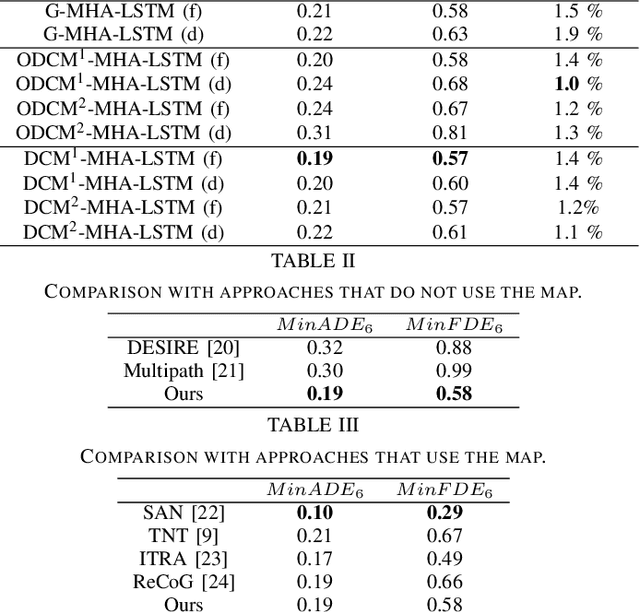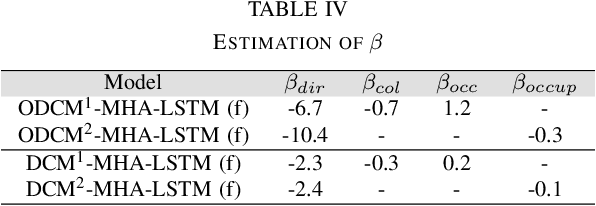Interpretable Goal-Based model for Vehicle Trajectory Prediction in Interactive Scenarios
Paper and Code
Aug 08, 2023



The abilities to understand the social interaction behaviors between a vehicle and its surroundings while predicting its trajectory in an urban environment are critical for road safety in autonomous driving. Social interactions are hard to explain because of their uncertainty. In recent years, neural network-based methods have been widely used for trajectory prediction and have been shown to outperform hand-crafted methods. However, these methods suffer from their lack of interpretability. In order to overcome this limitation, we combine the interpretability of a discrete choice model with the high accuracy of a neural network-based model for the task of vehicle trajectory prediction in an interactive environment. We implement and evaluate our model using the INTERACTION dataset and demonstrate the effectiveness of our proposed architecture to explain its predictions without compromising the accuracy.
 Add to Chrome
Add to Chrome Add to Firefox
Add to Firefox Add to Edge
Add to Edge